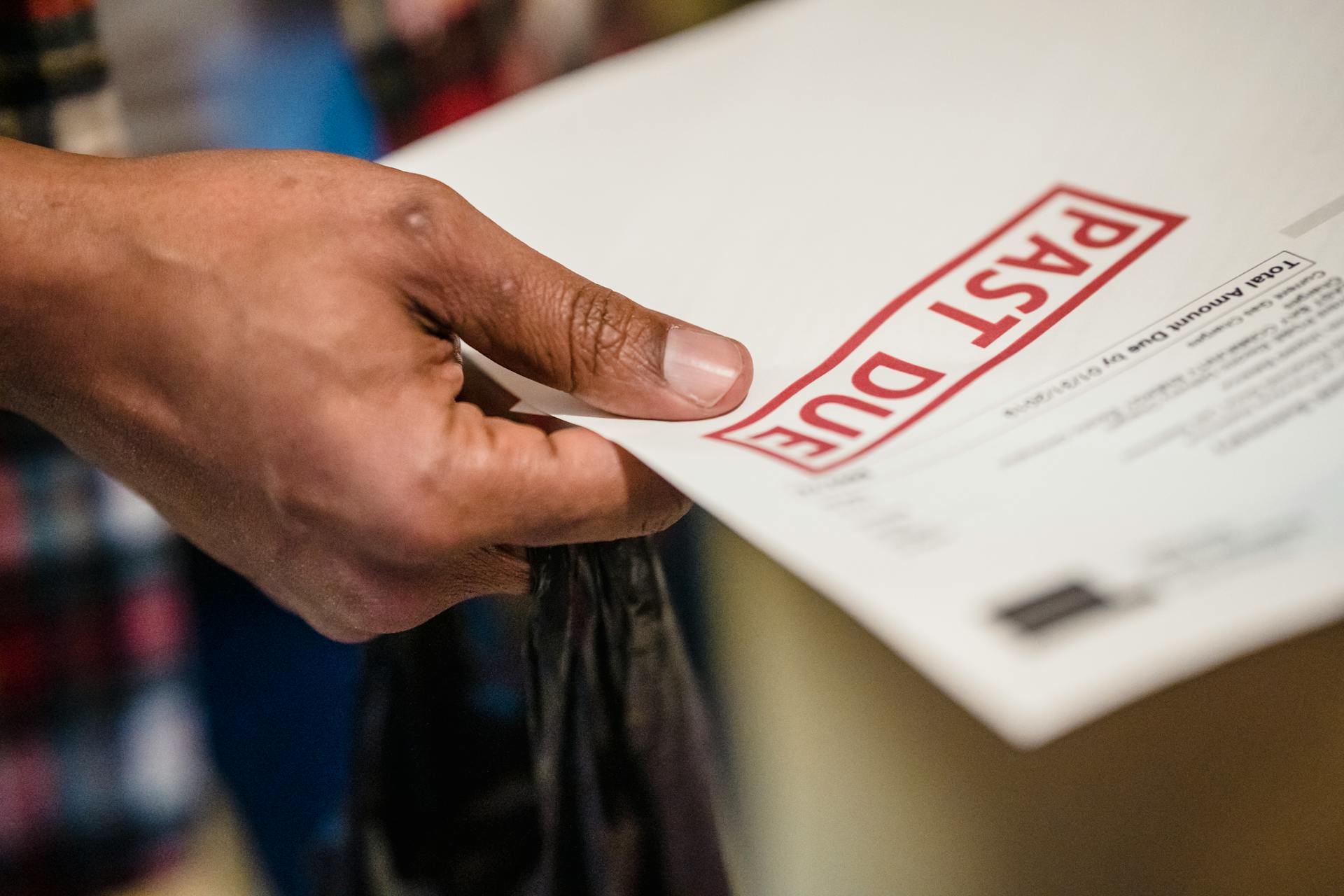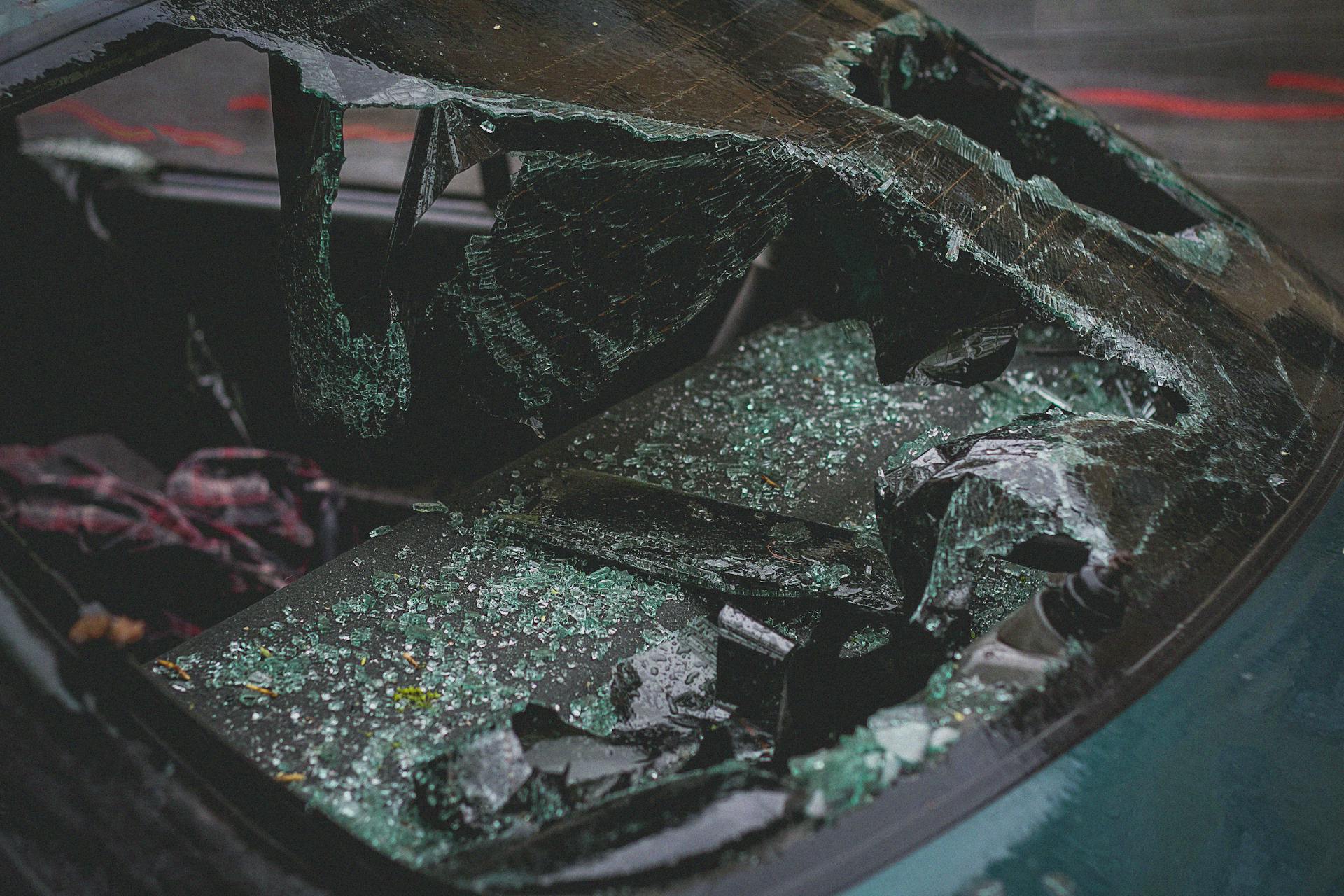
Automobile liability coverage is a must-have for any driver, but it can be confusing to understand what it entails. In the US, all states require drivers to have a minimum amount of liability coverage to operate a vehicle.
Liability coverage is designed to protect you financially in case you're involved in an accident and found liable. The two main types of liability coverage are bodily injury liability and property damage liability.
Bodily injury liability covers medical expenses, lost wages, and other related costs if you're found responsible for injuring someone in an accident. In the US, the average cost of a medical emergency room visit is around $1,400.
Property damage liability covers the cost of repairing or replacing damaged property, such as another driver's vehicle or a building. If you're found liable for an accident that causes $10,000 in property damage, you'd need to have at least $10,000 in property damage liability coverage.
You might like: Does Liability Insurance Cover Property Damage
Understanding Automobile Liability Coverage
Auto liability insurance is designed to pay others for the damage you cause behind the wheel, not for your own medical bills or car repairs.
It's essential to understand what your policy covers and doesn't cover. For example, liability insurance won't pay for your or your family's medical bills or repairs to your car.
To cover your own bills, you'll need to get additional types of insurance, such as personal injury protection or health insurance for your medical expenses as well as collision insurance for repairs to your vehicle.
Auto liability insurance is a legal requirement in many places, and it's crucial to understand your policy to avoid any confusion or disputes.
If you're involved in an accident and found responsible, liability insurance would help cover the repairs to the other party's vehicle, as seen in a fender bender or worse.
Curious to learn more? Check out: Insurance That Will Pay for Injury to Another Driver
Policy Details
Your auto policy is a contract between you and your insurance company, outlining the specifics of your coverage.
Your policy explains your costs, including any premiums or fees associated with your policy. This is crucial to understanding how much you'll pay for your coverage.
Your policy also outlines your coverages, which are the different things your policy covers. This includes liability coverage, which we'll be discussing in more detail.
Here are the key components of your auto policy:
- Costs
- Coverages (including liability coverage)
- Exclusions (the things your policy does not cover)
How Much You Need
Your auto insurance policy is a contract between you and your insurance company, and it's essential to understand the details of your policy. Your costs, coverages, and exclusions are all outlined in your policy.
You may be wondering how much liability coverage you need. The answer depends on your situation and the laws of your state. In most states, you're required to have at least some liability coverage, but the minimum limits can vary.
The minimum bodily injury liability limits are typically $15,000 for the death or injury of one person and $30,000 for the death or injury of more than one person in any one accident. These limits apply to injuries you cause to someone else.
You might like: Car Insurance Liability Coverage Limits
For property damage liability, the minimum limits are usually $5,000 for damage to the property of other people. This pays for damage you cause to someone else's car or to objects and structures that your car hits.
You may want to consider higher liability limits than the law requires, especially if you have significant assets that you want to protect. If you cause an accident that exceeds your liability limits, you'll be responsible for paying the rest of the claim out of pocket.
Here's a breakdown of the typical liability limits:
As a general rule, you'll want enough liability insurance to cover your net worth. This includes the value of all your cash and investments, plus the things you own, minus your debt. If you have a low net worth, there's less incentive for someone to sue you, so you may not need additional coverage.
Cost
Cost can vary significantly between insurance companies, even in the same area. This means you should compare costs and coverage from several companies.
Some costs are unavoidable, but others can be influenced by your choices. For example, costs vary even in the same area.
If you're shopping for auto insurance, be sure to compare costs and coverage from several companies.
Minimum Insurance Requirements
In California, the law requires you to show financial responsibility for any vehicle you own. This means you must have liability insurance that meets the minimum requirements.
You must have at least $15,000 in bodily injury liability coverage per person, and a total of $30,000 for all injuries in a single accident. This will help pay for damages to others if you're involved in a crash.
Here are the minimum insurance requirements in California:
Driving without insurance is illegal, and you must have liability coverage to register your car. Your insurance company will inform the California Department of Motor Vehicles (DMV) when you buy auto insurance.
California Law
In California, you must show financial responsibility for any vehicle you own. This means having auto liability insurance to cover injuries or damage to others.
You can be fined, have your license suspended, and even have your vehicle impounded if you don't have auto liability insurance.
The California law requires all drivers and vehicle owners to carry evidence of financial responsibility, which is usually auto liability insurance.
To register your car, you must have liability coverage, and your insurance company will notify the DMV if you buy or stop paying for insurance.
The minimum liability coverage limits in California are $15,000 for bodily injury or death per person, $30,000 for bodily injury or death per accident, and $5,000 for property damage.
See what others are reading: Uninsured Motorists Insurance for Bodily Injury
Minimum Bodily Limits
Minimum Bodily Injury Liability Limits are crucial to understand when it comes to protecting yourself and others on the road.
The minimum bodily injury liability limit for one person is $15,000, which covers medical expenses, lost wages, pain and suffering, and defense and court costs if you are sued.
If one person is injured in an accident, your coverage pays up to $15,000. If two or more people are injured, the coverage pays up to $30,000.
For another approach, see: Georgia Minimum Liability Coverage
This coverage applies to injuries that you cause to someone else, not to yourself.
Here's a breakdown of the minimum bodily injury liability limits:
It's essential to note that these limits are the minimum requirements, and it's highly recommended to purchase more coverage to protect your assets.
Proving Financial Responsibility
To prove you have liability coverage, your insurance company will provide you with a proof of insurance card that lists the insured vehicles, policy number, and dates the policy starts and ends.
This card should be kept in your car at all times.
You can obtain a proof of insurance card from your insurance company if you've purchased automobile liability insurance from an insurance company authorized to do business in California.
If you don't have insurance, you can make a cash deposit of $35,000 with the Department of Motor Vehicles (DMV) or obtain a surety bond for $35,000 from an insurance company licensed to do business in California.
If this caught your attention, see: What Are Business Liabilities
You must carry evidence of financial responsibility at all times in the vehicle, and most Californians maintain financial responsibility by purchasing automobile liability insurance.
Here are some alternative ways to show financial responsibility:
- Obtain automobile liability insurance from an insurance company authorized to do business in California.
- Make a cash deposit of $35,000 with the Department of Motor Vehicles (DMV).
- Obtain a surety bond for $35,000 from an insurance company licensed to do business in California.
Uninsured/Underinsured Motorists
You're required to have uninsured motorist coverage, which kicks in if you're involved in an accident with a driver who doesn't have any liability insurance.
This coverage pays for injuries to you and any passengers in your car when there's an accident with an uninsured driver who's at fault.
The limits of uninsured motorist bodily injury (UMBI) coverage are the same as your liability coverage limits.
Uninsured motorist property damage (UMPD) pays for damage to your car from an accident with an uninsured driver who's at fault, with a limit of $3,500.
However, you may not need UMPD if you have collision coverage.
If you're injured by an uninsured vehicle or a hit-and-run motorist in New York State, you're entitled to bodily injury protection under your auto insurance policy.
A different take: Does a Liability Only Auto Policy Need Uninsured Motorist Coverage
This mandatory coverage applies to you, your family members who reside in your household, and occupants of your car.
The amount of uninsured motorists protection required in New York State is the same minimum bodily injury limits as required for liability insurance.
If you're injured in an out-of-state accident, you can extend your uninsured motorists coverage with a small additional charge.
To file a claim, you should report the accident to the proper authorities and then promptly file a claim with your auto insurance company or, if applicable, the Motor Vehicle Accident Indemnification Corporation (MVAIC).
Here's a breakdown of the types of uninsured/underinsured motorist coverage:
- Uninsured Motorist Bodily Injury (UMBI): pays for injuries to you and any passengers in your car when there's an accident with an uninsured driver who's at fault
- Underinsured Motorist: covers limited costs for bodily injury if you're in an accident with a driver who doesn't have enough insurance to pay for damage
- Uninsured Motorist Property Damage (UMPD): pays for damage to your car from an accident with an uninsured driver who's at fault, with a limit of $3,500
Additional Coverage Options
If you're involved in an accident, your liability coverage won't pay to repair your vehicle or for injuries you personally sustained. You'll need separate coverages for these exposures, including collision coverage, comprehensive coverage, and medical payments coverage.
If you have a lot of assets or more opportunities to encounter risk, you might need to consider umbrella insurance. This type of policy expands your auto and home liability insurance beyond your carrier's normal limits.
You might have the kind of risk an umbrella policy is meant to cover if you host lots of parties or have a swimming pool, trampoline, or other feature that could be considered an "attractive nuisance." If you own one or more dogs, depending on the breed, your insurer may not cover your animal.
Here are some examples of situations where you might need an umbrella policy:
- Host lots of parties.
- Have a swimming pool, trampoline or other feature that could be considered an “attractive nuisance.”
- Own one or more dogs.
- Own boats, RVs, multiple homes or rental properties.
Renting a Car and Insurance
If you rent a car for 30 days or less, you may be offered a Collision Damage Waiver (CDW) by the rental company, which can cost up to $12 per day.
You don't need to buy a CDW if you're already insured under a New York auto insurance policy, regardless of whether you have collision or comprehensive coverage on your own car.
Many credit card companies also provide some form of collision damage coverage for rented vehicles, but this coverage usually only kicks in after other coverages have been exhausted.
Check with your credit card company to see what protection they offer and which types of vehicles are covered.
If you don't own a car, you may want to consider purchasing additional liability coverage from the rental company, which can offer higher liability limits than the required 25/50/10.
What Your Policy Covers
Your auto policy is a contract between you and your insurance company, outlining the costs, coverages, and exclusions. It's essential to understand what's covered so you can make informed decisions.
Your policy explains your coverages, which include the different things your policy covers. This can be a relief, especially if you're worried about unexpected expenses.
Liability car insurance covers other people's expenses when you cause an accident. It's a crucial component of your auto policy.
Liability car insurance has two main components: bodily injury liability and property damage liability. These components are essential to understanding what's covered.
Bodily injury liability covers other people's medical costs when they're injured in a traffic-related accident you cause. This can include medical bills, pain and suffering, lost wages, and even funeral costs.
Property damage liability covers damage to other people's property after a traffic-related accident you cause. This can range from cars and fences to buildings and government infrastructure, like guardrails and road signs.
See what others are reading: When to Switch from Full Coverage to Liability
Here's a breakdown of the two main components of liability car insurance:
Liability car insurance may also cover your own lawyers' bills or court fees if you're sued after an accident. This can be a significant expense, so it's good to know it's covered.
Policy Limits and Costs
Your auto insurance policy has three main liability limits, often displayed as three numbers on your policy. These limits are the maximum amounts your insurance will pay for injuries to others and property damage.
The first number represents the maximum your insurance will pay for injuries to a single person after an accident. This is known as the bodily injury liability limit per person. For example, a limit of $25,000 means your insurance will pay up to that amount for injuries to one person.
The second number is the maximum your insurance will pay for injuries to everyone you hurt in a single accident, excluding you or anyone in your household. This is the bodily injury liability limit per accident. A limit of $50,000 means your insurance will pay up to that amount for all injuries in one accident.
For another approach, see: Freeway Insurance Pay
The final number represents the maximum amount your insurance will pay for total property damage you cause. This includes damage to cars, buildings, or anything else that isn’t a person. A limit of $25,000 means your insurance will pay up to that amount for all property damage in one accident.
Here's a breakdown of the three main liability limits:
Keep in mind that these limits vary from policy to policy, and some insurers offer an alternative called "combined single limit" liability. This type of liability insurance covers both bodily injury and property damage with one larger limit, but it generally costs more than paying for three separate limits.
Special Situations
In certain situations, automobile liability coverage can be more complex than usual.
If you're involved in a hit-and-run accident, your insurance company may not pay out immediately, but they will typically cover the costs after the at-fault driver is identified.
You might need to provide additional documentation or evidence to support your claim in such cases.
The good news is that most insurance policies have a provision for hit-and-run accidents, so you're still protected in case of an unexpected event.
Recommended read: Does Insurance Cover Hit and Run Geico
Cancellation/Nonrenewal Provisions
An automobile policy can be canceled or non-renewed for specific reasons.
There are only three reasons an insurance company can cancel or non-renew a policy once it's issued.
Fraud or material misrepresentation is one of the reasons a policy can be canceled or non-renewed. This is a serious offense and can have severe consequences for the policyholder.
Non-payment of premium is another reason a policy can be canceled or non-renewed. This is a straightforward reason and policyholders should make sure to pay their premiums on time to avoid any issues.
A substantial increase in the hazard insured against is the third reason a policy can be canceled or non-renewed. This could mean that the policyholder has taken on a higher risk or their circumstances have changed significantly.
Here are the three reasons a policy can be canceled or non-renewed in a simple list:
- Fraud/material misrepresentation;
- Non-payment of premium; or
- Substantial increase in the hazard insured against.
Consequences of Lack
Lack of insurance can lead to serious consequences. If you don't have liability coverage, you'll get a ticket if you're asked to show proof of insurance.

Driving without insurance is a serious offense. Your license may be suspended if you don't have any insurance.
You'll want to avoid having your vehicle impounded. It's a hassle and a costly experience, especially if you're not prepared.
If you're caught driving without insurance, you'll need to take immediate action to rectify the situation. This may involve purchasing insurance and providing proof of coverage to the authorities.
Frequently Asked Questions
What are the limits of liability for auto insurance?
Our auto insurance liability limits are $15,000 for bodily injury per person, $30,000 per accident, and $5,000 for property damage
What is the Part A covered auto liability coverage?
Part A covered auto liability coverage protects you from financial losses if you're responsible for injuries or property damage to others in an accident. It's essential to have adequate coverage to avoid being underinsured for potentially unlimited liability claims.
Sources
- https://www.insurance.ca.gov/01-consumers/105-type/95-guides/01-auto/auto101.cfm
- https://www.dfs.ny.gov/consumers/auto_insurance/minimum_auto_insurance_requirements
- https://www.nerdwallet.com/article/insurance/auto/liability-car-insurance
- https://www.statefarm.com/insurance/auto/coverage-options/liability-coverage
- https://www.iii.org/article/what-covered-basic-auto-insurance-policy
Featured Images: pexels.com


